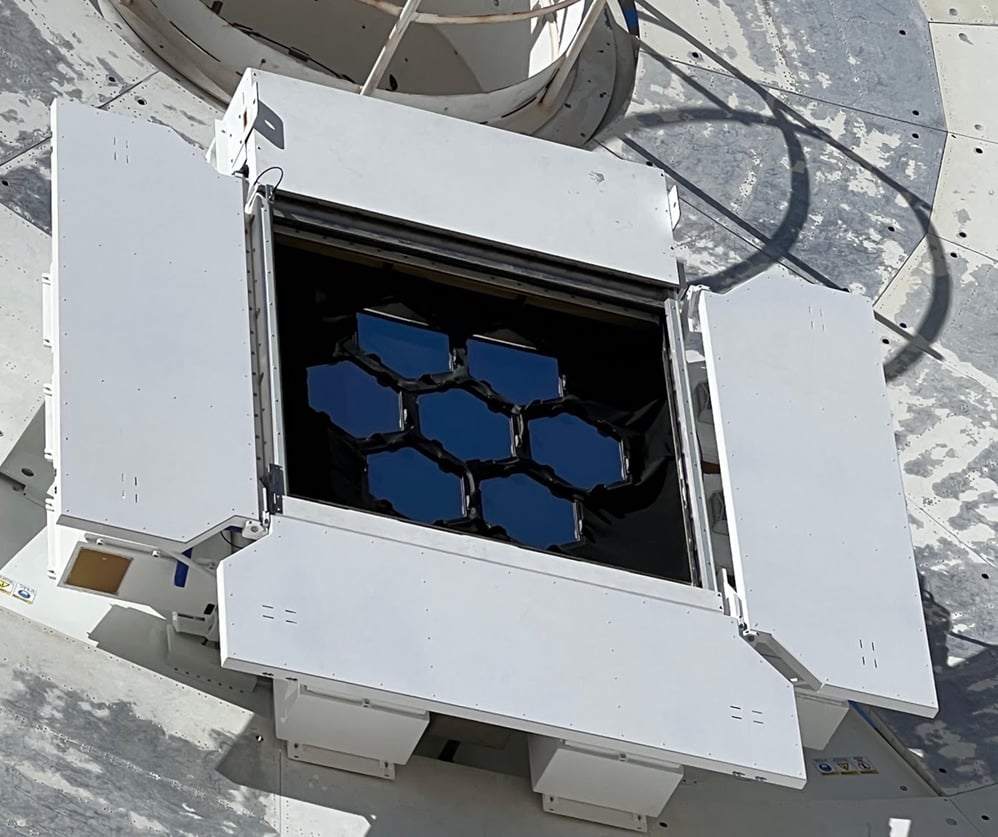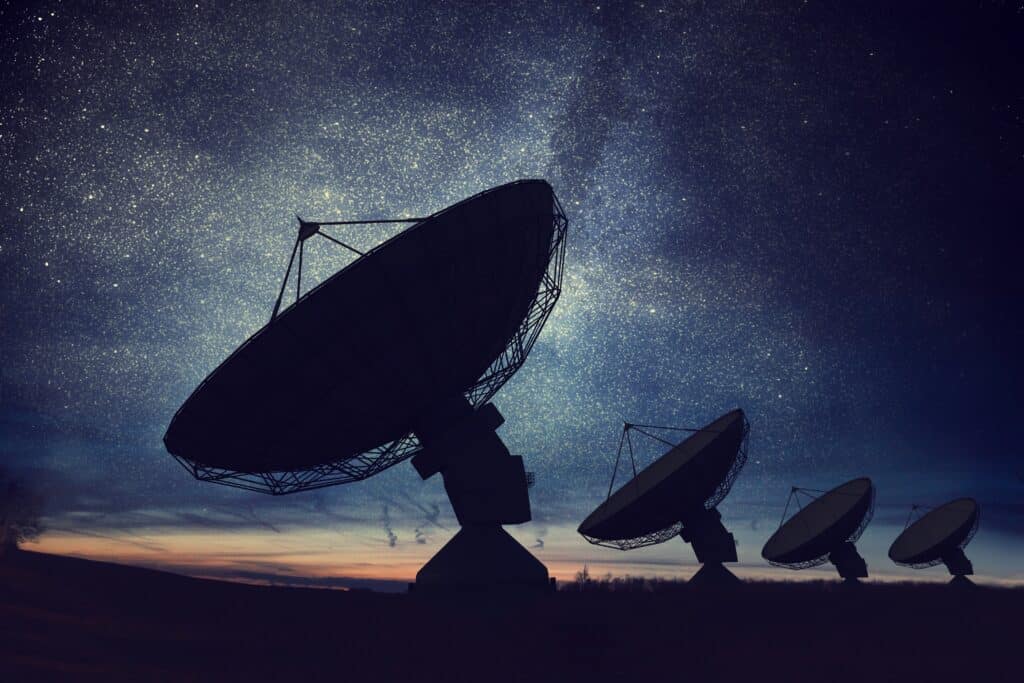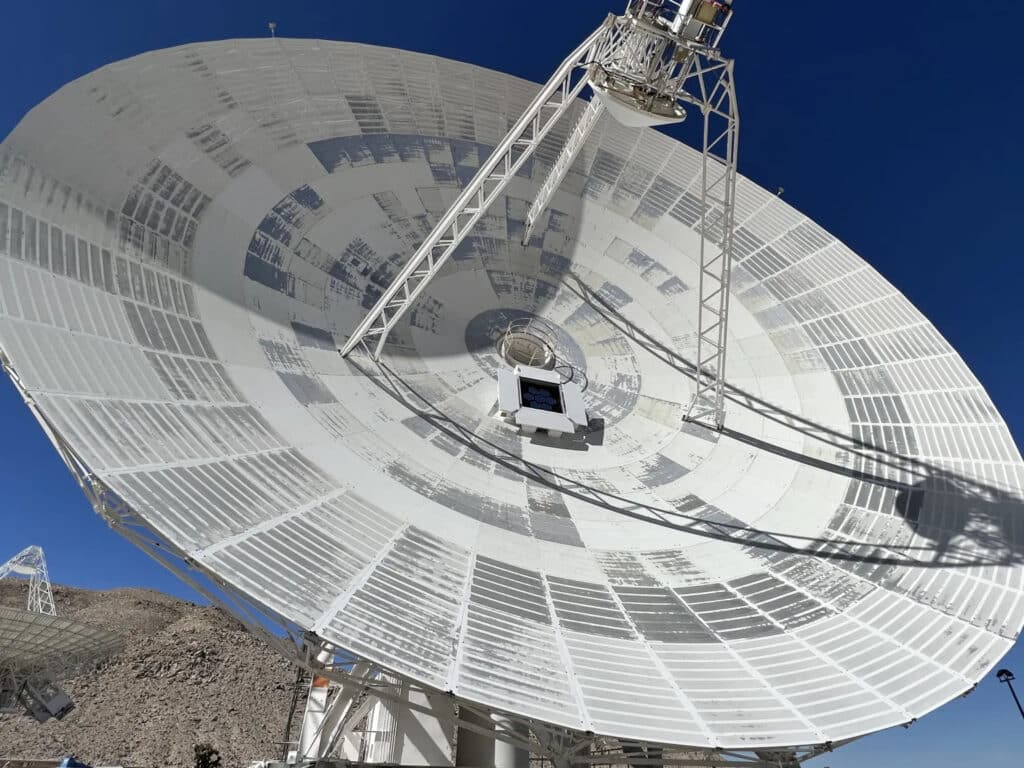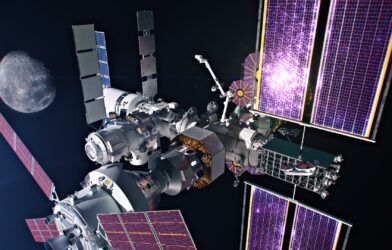For the first time, NASA’s new hybrid antenna was able to receive both radio frequency and near-infrared laser signals from deep space, marking a significant leap forward for space communication. This innovative development, part of NASA’s Psyche mission, signals a new era where the giant dish antennas of NASA’s Deep Space Network (DSN) could be upgraded to handle optical, or laser, communications alongside traditional radio waves.
The 112-foot antenna, known as Deep Space Station 13, is located at the DSN’s Goldstone Deep Space Communications Complex near Barstow, California. Since November 2023, it has been tracking and decoding the downlink laser from NASA’s Deep Space Optical Communications (DSOC) technology demonstration aboard the Psyche spacecraft. This spacecraft embarked on its journey on Oct. 13, 2023, aiming to explore the metal-rich asteroid Psyche located in the main asteroid belt between Mars and Jupiter.
“Our hybrid antenna has been able to successfully and reliably lock onto and track the DSOC downlink since shortly after the tech demo launched,” says Amy Smith, DSN deputy manager at NASA’s Jet Propulsion Laboratory (JPL), in a media release. “It also received Psyche’s radio frequency signal, so we have demonstrated synchronous radio and optical frequency deep space communications for the first time.”

This dual capability marks a critical step towards enhancing the DSN’s capacity to support the increasing demand for network communication, especially as humanity edges closer to sending astronauts to Mars. In late 2023, the hybrid antenna showcased its potential by downlinking data from 20 million miles away at a speed of 15.63 megabits per second – approximately 40 times faster than what current radio frequency communications can achieve at that distance. This technological marvel even transmitted a team photograph back to Earth, uploaded to DSOC before the launch of Psyche.
The antenna achieves this feat through the integration of seven ultra-precise segmented mirrors within its structure, designed to capture and redirect laser photons into a high-exposure camera. This system mirrors the functionality of a 3.3-foot aperture telescope, similar in design to the hexagonal mirrors found on NASA’s James Webb Space Telescope. The captured laser signal is then processed through a cryogenically cooled semiconducting nanowire single photon detector, a piece of cutting-edge technology developed by JPL’s Microdevices Laboratory.
“It’s a high-tolerance optical system built on a 34-meter flexible structure,” notes Barzia Tehrani, communications ground systems deputy manager and delivery manager for the hybrid antenna at JPL. “We use a system of mirrors, precise sensors, and cameras to actively align and direct laser from deep space into a fiber reaching the detector.”
Tehrani also expressed hope that the antenna would be sensitive enough to detect signals sent from as far as Mars at its greatest distance from Earth.
Looking towards the future, the seven-segment reflector on the antenna serves as a proof of concept for a more potent version that could potentially include 64 segments, equivalent to a 26-foot aperture telescope. This scalable approach could significantly enhance the DSN’s capability to transmit complex scientific data, high-definition imagery, and even ultra-high-definition video from deep space at unprecedented bitrates.

Retrofitting existing radio frequency antennas with optical terminals and developing new hybrid antennas may provide a viable solution to the current absence of a dedicated optical ground infrastructure. The DSN, with its 14 dishes spread across facilities in California, Madrid, and Canberra, could thus transform into a more robust network capable of handling vast volumes of data through optical communications, while still supporting less bandwidth-intensive data like spacecraft telemetry via radio frequencies.
This hybrid approach not only represents a technological advancement but also a strategic move to optimize resources.
“For decades, we have been adding new radio frequencies to the DSN’s giant antennas located around the globe, so the most feasible next step is to include optical frequencies,” concludes Tehrani. “We can have one asset doing two things at the same time; converting our communication roads into highways and saving time, money, and resources.”












